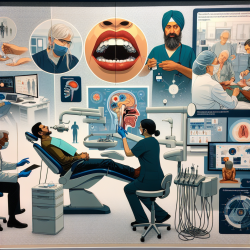Key Findings from the Systematic Review
The systematic review analyzed 10 studies involving 153 participants with aphasia. The studies were evaluated based on:
- Characteristics of the participants
- Technology utilized
- Services delivered via telepractice
- Research methodology
- Results and conclusions
Effectiveness of Telepractice
All studies confirmed the feasibility and effectiveness of telepractice for diagnostic, intervention, and consultative services. The review found no significant differences between in-person and telepractice assessment results. Intervention and consultation services delivered via telepractice were found to be equally effective as in-person services.
Advantages of Telepractice
- Improved attentiveness to stimuli and materials
- Reduced cost of travel and treatment
- More effective use of time
- Successful delivery of services to geographically remote areas
- Improved attendance and adherence to intervention protocols
Challenges and Limitations
- Difficulty sustaining telephone and/or Internet connections
- Challenges communicating over a distance due to connectivity issues
- Reduced quality of visual cues and stimuli
- Client concerns regarding privacy and equipment
These challenges are related to the technology used to support and deliver the services. As technology continues to evolve, many of these issues can be mitigated.
Future Research Directions
While the review highlights the effectiveness of telepractice, it also underscores the need for further research. Future studies should focus on:
- Using more robust research designs such as randomized investigations and control groups
- Replicating assessments, interventions, and procedures to generalize the use of telepractice
- Exploring a greater range of services delivered via telepractice
- Examining issues of reimbursement, HIPAA, privacy, and ethical considerations
Conclusion
The systematic review suggests that telepractice is a viable and effective method for delivering services to individuals with aphasia. The advancements in technology and the growing need for speech and language services make telepractice a promising form of service delivery in the future. As hardware, software, and Internet infrastructure continue to improve, telepractice will enhance the quality, quantity, and accessibility of services for individuals with aphasia.
To read the original research paper, please follow this link: Telepractice in the Assessment and Treatment of Individuals with Aphasia: A Systematic Review.










